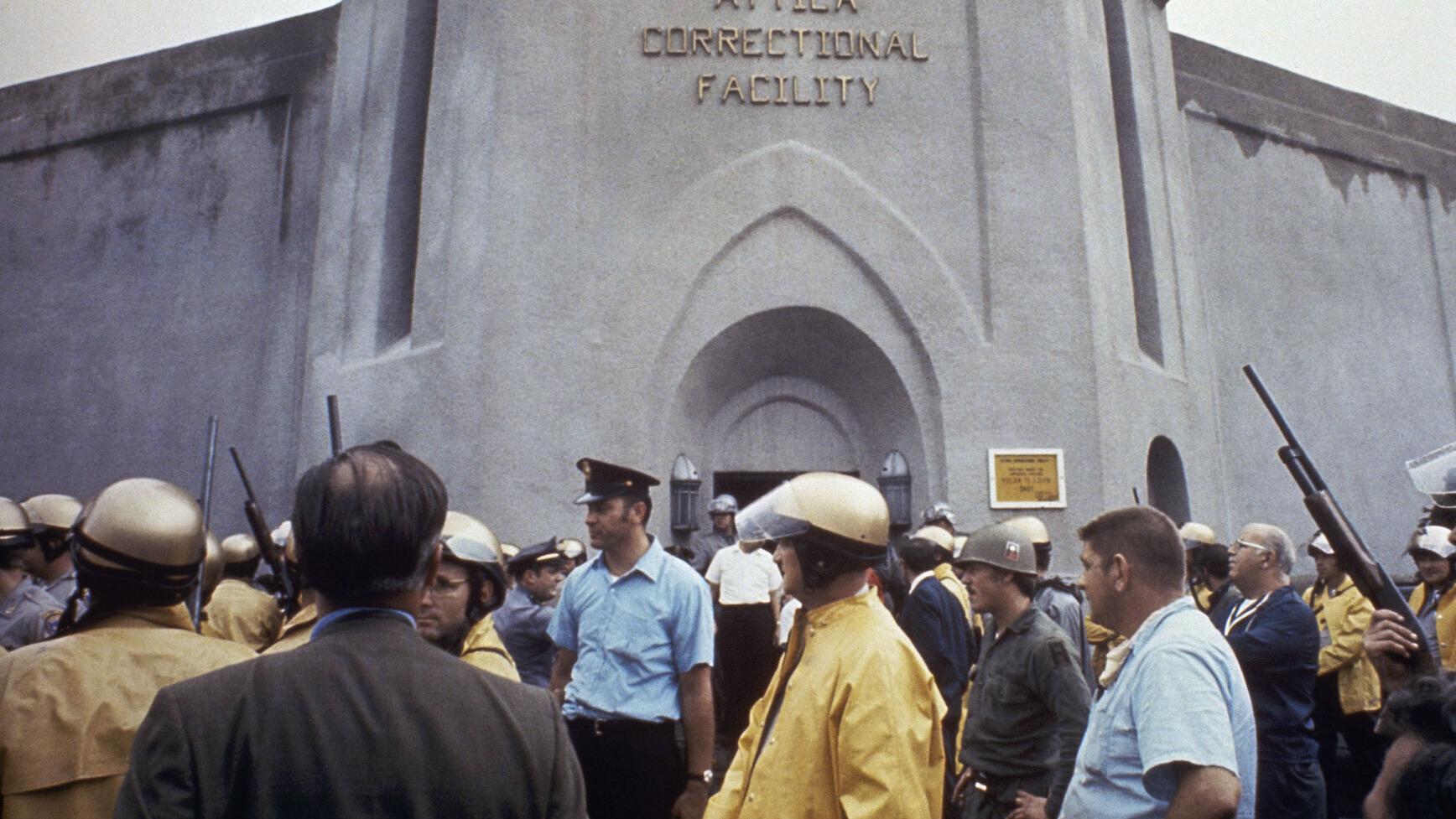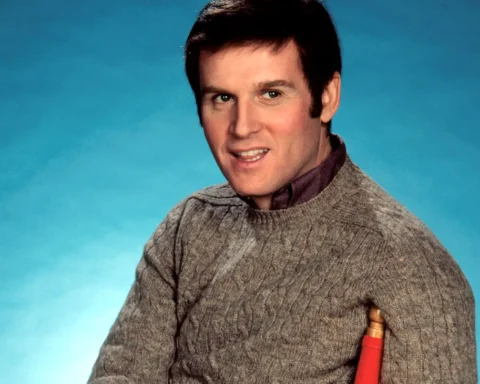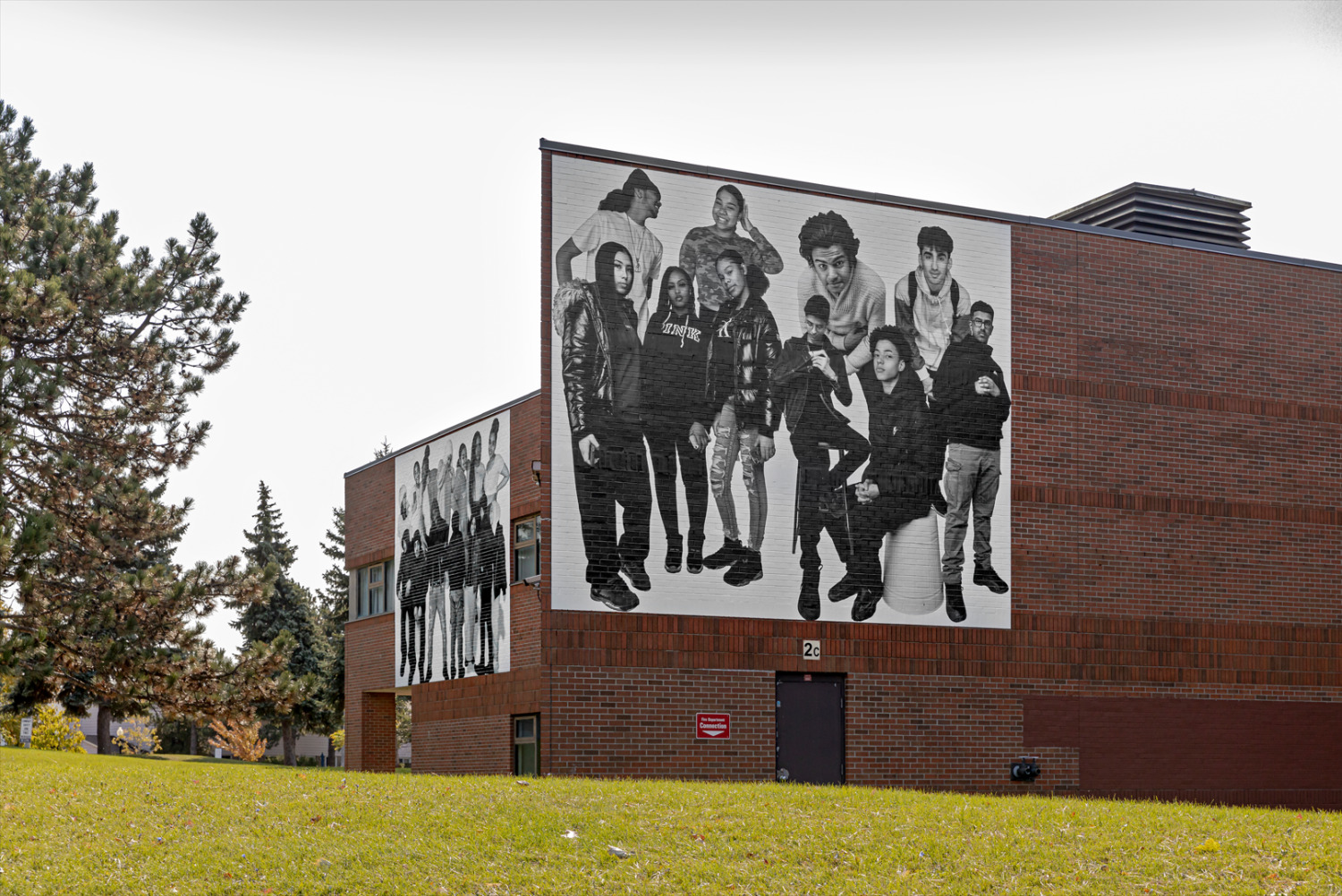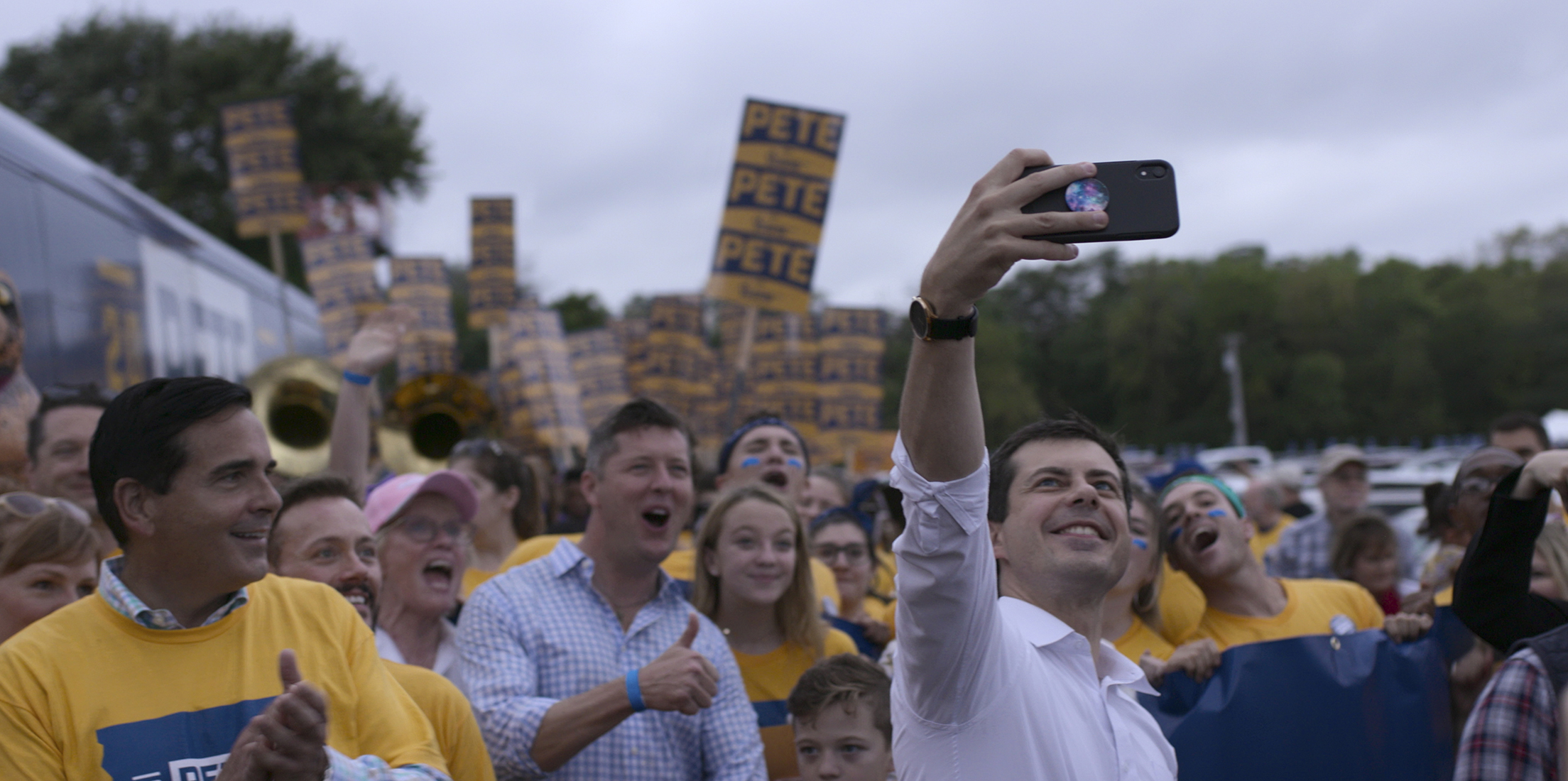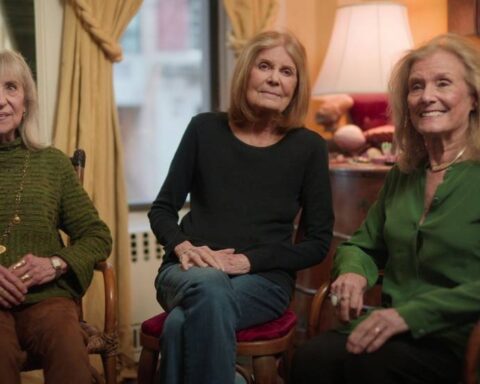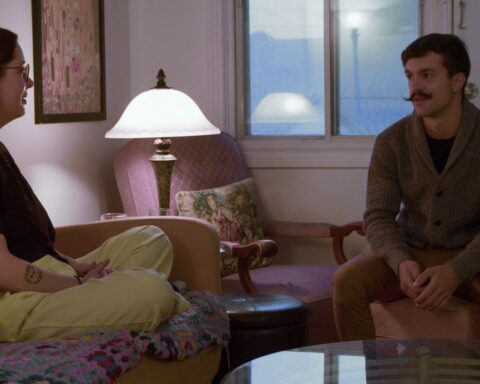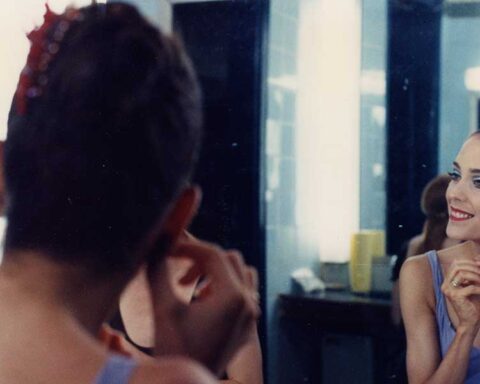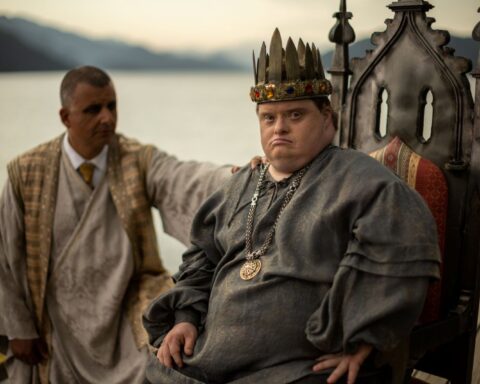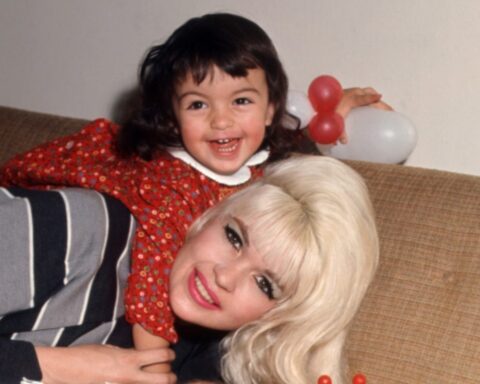“I really learned everything that I know about Attica in the course of making the film,” says Attica co-director Traci A. Curry. The up-and-comer joins Attica director, industry veteran Stanley Nelson, in bringing a brutal historical event to the screen in visceral, vivid detail. The two generations of filmmakers revisit the prison uprising at Attica Correctional Facility on September 9, 1971. Attica premiered earlier this year at the Toronto International Film Festival where it marked the 50th anniversary of the event. (Read POV’s TIFF review of Attica here.) As Nelson and Curry draw compelling interviews from the inmates who survived to tell the tale, and the families of prison guards left to make sense of a brutal act of police brutality, one can’t mistake the echoes of history in the present. This story is 50 years old, but the bloody images that appear in Attica could easily be from the news stories of today.
The interviewees recount a mounting sense of tension, hostility, and dread as the inmates’ plea for humanity morphed into a distorted account of barbarism and take-no-prisoners violence. The meticulous archival research gives audiences vantage points from all corners outside the prison walls where the prison town found itself pumped up and enraged by the accounts people heard about their family members trapped inside the facility’s walls. As they recount the history of the Attica riot, Nelson and Curry craft a damning essay about the system factors—institutionalised racism, poverty, poor education, and biased media—that enable an unstable situation to escalate into a full-blown war.
Nelson and Curry joined POV by Zoom ahead of Attica’s debut on Showtime and Crave to discuss their process, the story’s ongoing relevance, and the state of things in the USA today.
POV: Pat Mullen
SN: Stanley Nelson
TC: Traci A. Curry
This interview has been edited for brevity and clarity.
POV: Stanley, could you take us back to 1971? What was it like for you to witness the coverage of Attica?
SN: I can’t say I have a great memory of what was happening, but I remember the prisoners had taken the prison, and then they were holding it. Those things can usually resolve themselves very quickly. It took a few days, but then there was a kind of heartbreak when it was retaken the way it was—they just went in there and murdered all these people.
POV: Traci, when did you first learn the Attica story? I assume that was a bit before your time?
TC: It’s a bit before my time. [Laughs.] I knew existed in pop culture as a symbol of revolution and resistance. I knew that a prison disturbance of some sorts had happened, and I was aware of the moment in Dog Day Afternoon, which was very disconnected from what actually happened at Attica.
POV: I’m glad you mentioned Dog Day Afternoon because the first time I really heard the word “Attica” was watching Dog Day Afternoon. I really didn’t know what he was referring to until I saw the American Film Institute’s 100 Years, 100 Quotes special, and they actually talked about the context. How do you work with the possibility that, when people hear the word “Attica,” they think of Al Pacino rather than the prison siege?
SN: We realized early on that some people knew a fair amount about Attica. Some people only knew the term from Al Pacino yelling ‘Attica!’, ‘Attica!’, ‘Attica!’, or knew very little about Attica. Then some people didn’t know anything. In the middle of production, we had a staff Zoom call and we asked who did or didn’t know anything about Attica. About 25% of the people on the call didn’t know anything at all. We realized that, for those people, that film would be an incredible shock.
TC: That moment in the film let me know that, for whatever reason, Attica resonated in culture and in history beyond the event itself. The job then is telling the story and putting it all together to figure out why. There had been other prison uprisings, but what made this one so profoundly resonant? Even the mention of it in the film invokes so many things that the word didn’t need to be explained in that moment. So much was contained in the reference to Attica.
POV: How did your collaboration come together? Traci, I understand you were at Firelight for a few years before?
TC: I’d previously finished a film as a producer for Firelight for ESPN’s 30 for 30 about Michael Vick. And then Stanley suggested Attica. Like I said, I didn’t know much about it, but I knew that somehow it was connected to questions of justice, human rights, the prison system, and the ways in which all of those things are wrapped up with race and power. I’m always excited to explore those themes in my work.
SN: I thought it was perfect for Traci because she has a really a strong journalistic background. The digging that she would need to do in terms of finding people and convincing people to be interviewed was perfect for this project.
POV: You did the bulk of the interviews, Traci? How did the division of labour work?
TC: In some ways, the pandemic created so much time for us to be in our individual silos doing the work. I just had the space and the opportunity to dig and dig and dig. I could spend the time that it took to not only find people, but also to connect with them, get them to trust me, and have repeated conversations until they were comfortable with the idea of sharing their stories on camera.

POV: How did the inmates feel about revisiting the Attica story?
TC: Initially, people were not excited about the prospect of sharing the worst trauma of their lives with a complete stranger. One thing that comes across is the emotion and the authenticity in the way that people talk about it. Even though this was 50 years ago, so much of it is right there underneath the surface. Once we crossed that initial boundary, people really wanted to talk about it—so many of them had never been asked about it. Some of them perhaps felt that, in talking about it, they could feel something like justice.
SN: As a team, we leaned in on things that I learned when we did the film Jonestown because that story ended with a horrible traumatic experience. We learned from that we can talk to everybody, but we should be respectful of people who don’t want to do it. We’re not going to do that kind of producer, double-talk because it might not be good for them to do it. We tell people that we’ll talk about it honestly, and leave it up to them whether they want to be interviewed.
POV: Who is the villain of the Attica story? How do you frame that dynamic with the survivors and the families who appear in the interviews?
SN: We wanted it to be the prisoners’ story and also the guards’ story and their families’ stories because, in many ways, they were similar. They were in a little town where the only jobs were that you could be a dairy farmer or you could work at the prison. If you worked at the prison, you weren’t trained as a prison guard. You went on day one and you’re prison guard. For the people who were killed, they were all killed by the state—the hostages as much as the prisoners were attacked by the state on that last day. On the other hand, it’s a balancing act because, as the prisoners talk about the beatings and the conditions in Attica, those [guards] were the people who meted out those conditions. We wanted to be sympathetic to their humanity—up to a point.
TC: We wanted to do something nuanced and complex that recognized the human being-ness of all the people who were involved. Yes, there a guard was killed by some prisoners when the uprising happened, but the prisoners were also making a righteous demand for the recognition of their humanity. Those things exist at the same time. Police officers went and massacred these people, but we also tell you that they were sitting out there day after day without sleep hearing lies about their brothers in arms and their little brothers, in some cases, being castrated and tortured. You hear Lewis Steel say people that were alien to them. What do you think is going to happen when you have people with that racial animus and they’re filling in the gaps in their imagination, and then you put a gun in that person’s hand and say, “Go in and start shooting.” That’s why we take the time to say that Attica wasn’t just a prison—it was a place and a community. The prison was the economic driver for this place; these people relied on it in many ways. It was culture and familial.
Ultimately, if there is any villain in the story, it is the state and Norman Rockefeller. You hear the observers saying, “We didn’t want him to go in and talk to the prisoners. We just wanted him to come and see.” They felt the hostility and the rage that was growing on the outside. They thought if he came and felt what they felt, he’d see what was going to happen if he sent people in with guns.
POV: So much of what we see in Attica are things we saw in 2020, like how events unfolded with George Floyd’s murder, the protest, Trump’s terrible response, and more. How did working on this film shape the way you looked at history unfolding in 2020? How did the events of 2020 shape how you looked at the archives from 1971?
TC: I always go back to this because it was such a surreal experience to be making this film. I live in Brooklyn, so there were George Floyd protests moving literally right under my window daily, I saw law enforcement descend upon protesters outside of my window. We all saw the incident that you mentioned, with the former president outside the White House and how he used that as a political opportunity, which is essentially what we saw happen in Attica. We saw the pandemic ravaged the prisons and the prisoners, for the most part, were left to die, get sick, and suffer until some of the non-violent folks were ultimately left out. History exists on a continuum. That really crystallized for me what the story was really all about, and that how it continues to be an ongoing issue today.
SN: For me, I don’t think George Floyd changed the story at all. I think it changed the acceptance of the story. A lot of the population looks at the police a little differently than they did a couple years ago. I don’t think it made us take a different tactic in the interviews, but it made the story more accessible for more people.
POV: In terms of accessibility, I couldn’t help but note the way social media has changed how events are covered, talked about, and circulated. What do you think distinguishes Attica and the protests of 2020 in terms of coverage?
SN: To put it in context, Attica is 20 miles from New York City. The cavalry was shooting 16mm film. They had to shoot the film, then they had to put it on a plane, fly it down to New York City, process it, and then it hit the air. The process daily of getting footage on the air is hugely different from today.
TC: Social media is problematic on many levels, but, in some ways, it democratizes who gets to speak, who gets spoken for, and who’s the authority and who isn’t, for better and for worse. Part of what happens at Attica is that there’s only one voice. There was the spokesperson who came out and told the press that the prisoners killed 10 hostages. The press then said, “Well, that is the story” and they ran with it. They did no additional reporting with a few exceptions, one of which is John Johnson. Then we get what becomes the prevailing narrative, which is that the prisoners were castrating people, torturing people, that they slashed their throats and murdered them. That happens because there’s only one source. In some ways, that couldn’t happen with social media because everybody’s an expert, everybody’s a reporter, everyone has their sources of information. One other thing about prisons is that we just disappear people into prisons. There are no cameras in the prison, and no one has their camera phones. Everyone feels like they’re an expert today because they’re walking around with a camera. It’s an interesting thought experiment to wonder how Attica would play out today.
POV: What can learn about the prison system in America today from Attica?
SN: The prison system is set up to put people away and forget about them. The other thing is the kind of racism that exists in the prison system and you see an Attica. I call it casual racism. You hear, “[expletive, expletive, expletive].” We’ve now got two million people incarcerated. The prison system today might have changed a little bit, but it’s counterbalanced by the number of people we have incarcerated.
TC: The film invites us to question who we are and who we want to be as a society. Are we cool with having those two million prisoners? The prison population in the United States is the largest in the world. Are we fine locking people away? We have the luxury of not thinking about those questions too deeply today. You read a story about the horrific things that are happening miles away on Rikers Island, but you don’t have to look into the faces of those [12] people who have died on Rikers Island. God knows what else has happened to people there. In some ways, it’s not a hopeful message: with Attica, people saw it. It was right there and you saw what happened.
POV: How do you feel as a citizen of America today? Are things getting better? We’re not getting nearly as much news from the States now that Trump is out of office, and in a way it seems like things must be better because we’re not inundated with craziness.
TC: I want to say something positive, but, honestly, that’s not how I feel. America was supposedly, on paper anyways, this great experiment: all these different people coming together from different places to become one nation indivisible. Lately, I’ve been feeling that the experiment has failed. What was supposed to be indivisible is divided, and it seems divided in ways that will not allow us to be knit back together as a country.
SN: The only positive thing we can say is that, Biden’s President, Trump’s not President anymore. As we’re talking about the news, social media allows us to capture George Floyd’s murder, but on the other hand, you have Fox News, which is supposedly a legitimate news source that’s pumping out an alternate version of reality. Could you imagine a Fox News existence of Attica? The U.S. is in a really scary place. Laws have been passed against teaching about slavery. We can’t handle a pandemic as well as South Korea. People are still refusing to get vaccinated. We’re in the States, but it feels like we’re living in Looney Tunes land.
Attica premieres Nov. 6 on Showtime and Crave.




